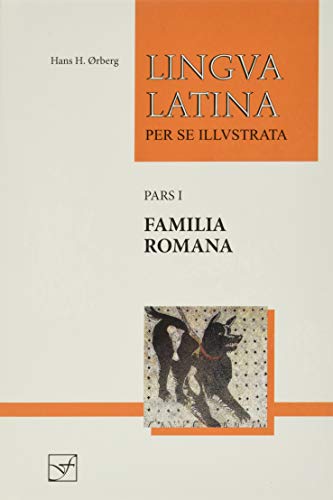Lingua Latina Per Se Illustrata: Familia Romana (Lingua Latina) is a Latin textbook published by a Danish man, Hans Henning Orberg, first in 1955 and then revised in 1990. The text is designed for fast paced instruction where, like modern foreign language teaching methods, Latin must be spoken as much as possible in class. This approach, therefore, is meant to discipline students to develop the skill of reading and speaking the language quickly. As Orberg, himself, admits, “The object is to accustom the student, from the start, to read and understand the Latin text as Latin without the interference of English, or with a minimum interference of English.” Orberg stays true to his word by not allowing a single English word to sneak its way into his text.
While there is so much more to be said about the philosophy and pedagogical practices concerning this method of Latin instruction, the intent of this article is to succinctly offer three categories with readily employable tactics to improve your instruction of the text, especially if you find yourself off the purist’s path and on the path of minimal English within your classroom.

Read Aloud
In line with Orberg’s approach Lingua Latina is at its best when read aloud by the students and teacher in class. Despite Orberg’s warning against spoken English translations, the English translations spoken aloud by the students are an effective tool to ensure students are tracking with the language in real time.
Here are several ideas for reading aloud:
- Call on one student to read and a different student to translate
- Rotate students reading after each sentence
- Lead whole class responses for a mispronounced word
- Initiate whole class readings of one to two sentences at a time
- Remind students of words by having the class chant them in unison
Grammar
A reasonable critique of Orberg’s method is that it does not supply the teacher or the student with enough grammar instruction. Some prize this attribute as a mark of excellence, while others are quick to call it a grave deficiency. Debating this point is not the purpose here, but if you are a Latin teacher who as a student was ‘born and bred’ on grammar-translation instruction, then you are feeling a little bit like a fish out of water in the world of Lingua Latina. And, if you are a teacher who arrived at your knowledge of the language mainly through inductive reasoning and examples like in Lingua Latina, then you are likely feeling a sense of uneasiness wondering if you could be doing more grammar for your students.
Regardless of where you fit, spicing up your instruction of Lingua Latina with grammar practice will strengthen students’ assimilation of the language. Even though there is a Grammatica Latina at the end of each chapter to reinforce grammatical concepts taught in the chapter, more practice can be done to solidify these bonds of understanding for students.
Here are several ideas for grammar instruction:
- Require students on their whiteboards to write a few paradigms prior to reading
- Ask students to orally fill in a paradigm you wrote on the board prior to reading
- Chant case endings and meanings with the students
- Inquire why specific endings are given to words after reading them Latin
- Maintain a notebook of grammatical paradigms for students to reference
Vocabulary
Like an intense, physically demanding trainer to a professional athlete, Lingua Latina moves its student at a brisk pace of what feels like mental gymnastics. Instead of barbells and sprints to train one physically, Lingua Latina fortifies student understanding by the repetition of words in story. By seeing the words in the order and context of how they are spoken, Lingua Latina promises a strong recall of the vocabulary. However, large class sizes, varying levels of English language knowledge, and intermittent lack of student attention render it difficult to always deliver on this promise.
Here are several ideas for vocabulary recall:
- Review specific vocabulary words that will appear prior to reading
- Write words (six to eight) on the board and chant prior to the lesson
- Ensure students chant the dictionary entry of the word during the board review
- Erase parts of the dictionary entry from the board and challenge students to chant with the missing pieces
- Refer back to the chant during translation when a student struggles to recall a word
- Use built-in illustrations from the text as a reference to help students recall
Final Thoughts
For those who have taught from Lingua Latina before, know that it is fun, engaging, and a reliable tool to learn Latin. This is true whether it serves as your single or supplemental text for Latin instruction. The practical ideas offered here have both curriculum choices in mind. As we know, it is the work of the educator to shrink the gap between what is known and unknown for students through diligent, disciplined, and joyful instruction.
